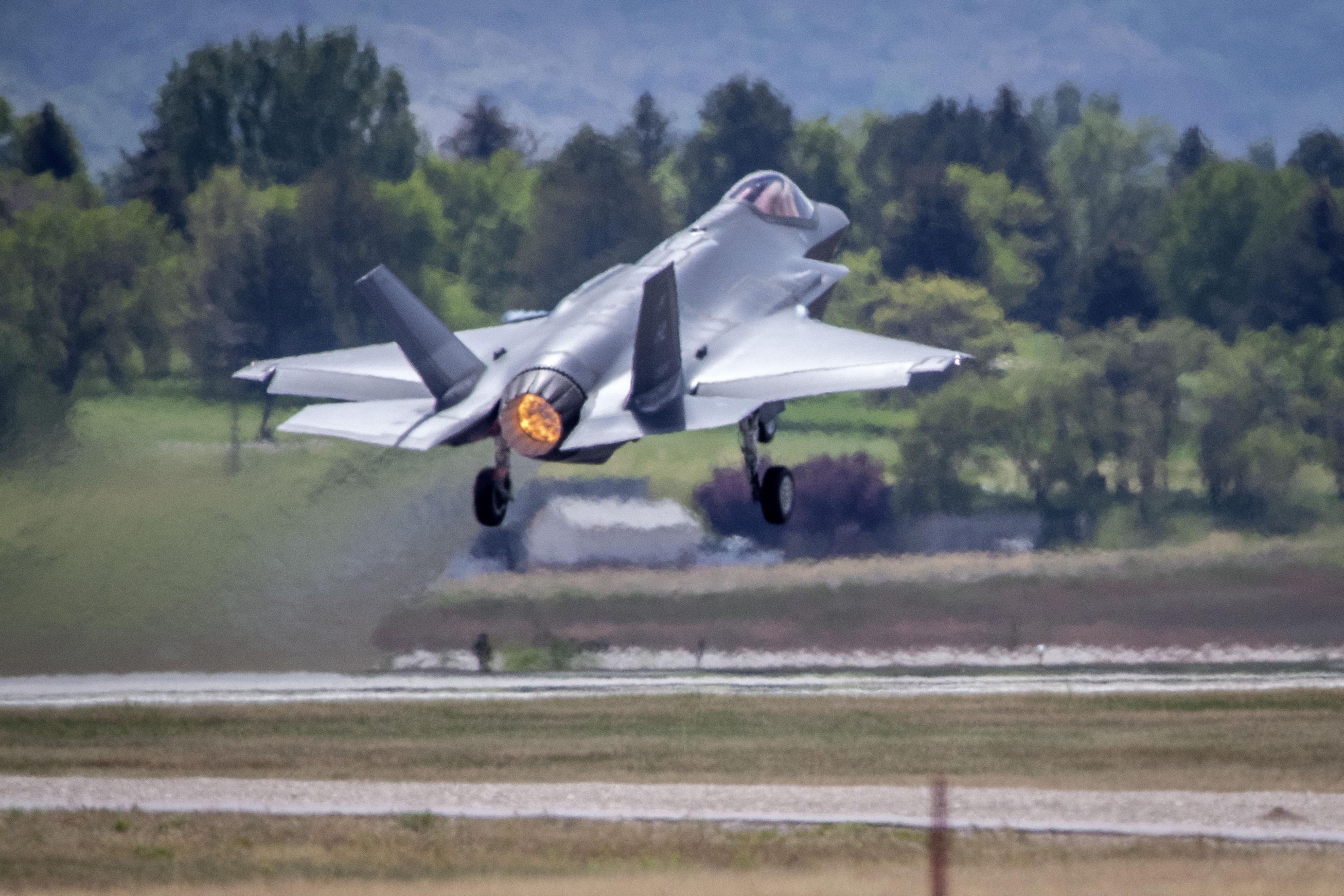An F-35 Lightning II aircraft assigned to Hill AFB, Utah, takes off from the base, May 22, 2017. Air Force photo by Paul Holcomb.
If not adequately restructured in the near future, the cost of the F-35 Joint Strike Fighter’s follow-on modernization effort could see unexpected cost increases, according to a new report from the Government Accountability Office released Tuesday.
At issue is the slow development of a new data processor needed to support Block 4 capabilities on the aircraft. To avoid repeating the acquisition mistakes that have plagued the F-35 baseline program, GAO says the F-35 modernization strategy must use an incremental approach that separates procurement from development and testing.
Concurrency—or the overlap of the procurement phase with the development and testing phase of a weapon system—“has been a significant contributor to many of the problems with the baseline F-35 acquisition program,” which is currently expected to cost $104 billion, or 45 percent, more than the original estimate, and is five years behind schedule, according to the report. The Department of Defense estimated in April 2016 that concurrency had cost nearly $2 billion in the baseline F-35 program.
Now GAO sees the possibility for similar concurrency problems arising in the modernization effort. The Block 4 F-35 is likely to include new weapons (or at least weapons that are not currently in the 3F configuration) and enhancements to the aircraft’s electronic warfare suite, among other things. The bulk of the Air Force’s F-35A fleet will be built in the Block 4 and subsequent configurations.
The release of a request for proposals for the Block 4 upgrade has already been delayed from the third quarter of 2017 to later this year due to “budget uncertainties” and the “ongoing change in program leadership,” the Joint Program Office told GAO. The JPO has not delivered a congressionally mandated report on modernization acquisition strategy that was due in March, noting it says it will deliver the report by the end of August.
GAO wants the DOD to clarify its plans to eliminate concurrency in the Block 4 program. Program managers are currently planning to request funds for the first increment of Block 4 aircraft purchases in February 2018. Baseline F-35s, however, are currently maximizing the data processing capabilities of the aircraft. The Block 4 upgrades will require a new processor, but program officials told GAO that “an updated processor may not be available until the second increment of Block 4.”
Given these concurrency problems, GAO sees “a risk that the testing and delivery of the first increment of Block 4 capability may not be achievable as planned.”
As a solution, GAO recommends “an incremental, knowledge-based approach” to the modernization program. DOD has committed to such a strategy in theory and told GAO that it plans to “develop Block 4 capabilities in four increments.”
This plan would involve returning to the Joint Requirements Oversight Council for fresh validation “if any significant cost, schedule, or quantity changes occur.” It would also make use of separate contract line item numbers for various capabilities related to the upgrade. This process would produce “more informed management and oversight” that would allow “decision makers to track costs and progress across individual development efforts,” in GAO’s estimation.
If the program office cannot incorporate these suggestions into its revised modernization strategy, GAO says, “DOD may be negotiating prices for those aircraft without knowing if or when the more advanced capabilities will be delivered and whether they will function as required.” In addition, Congress would find themselves confronting “the challenge of making funding decisions with limited information.”
